Alessandro Gerelli’s interesting photo story, Power and Art at Cavallino, turned a light on here at the offices of VeloceToday, and we dug out an old Ferrari brochure from our archives to review and offer for sale.
In 1985, late in his career, Enzo Ferrari authorized the production of a special brochure on a subject which was very close to his heart. It wasn’t for public use, and no new cars were featured in this rather lavish, 44 page high quality booklet, which consists of nothing but black and white photos of Ferrari engines, with a complete fold-out chart with tech specs for each one of the 44 engines in the brochure. There is probably no other car manufacturer which could or would produce such a publication. But Ferraris were the lifeblood of Enzo Ferrari and his factory.
In the introduction to the brochure, Enzo Ferrari writes in Italian and signs it with his famous purple ink. While there is no English translation in the brochure, we have translated it below (and any mistakes are ours).
“I have always given a pre-eminent importance to the engine in the creations of Ferrari, trying to get the maximum yields, in the belief that it represents more than fifty percent of success in racing.
“So it was for so long and so, even though the percentage has changed, it is still done that way, after forty years of activity of the Ferrari since World War II.
“Ideas are our strength, and our stubbornness to support them is our patrimony. When I started, against the advice of all, I wanted a twelve-cylinder. The engine, through all the changes due to my ambitions, is still recognizable by its numbers, as are its children and grandchildren. The design walked the path of eight, six, and four cylinders, but twelve remains my traditional theme and certainly the most beloved.
“With my staff, generous interpreters of my exuberance, I conducted to date one hundred and sixty experimental constructions. I hope you will forgive me a certain pride and emotional enthusiasms that have always supported my passion as a builder, but with the stimulus of competition that always provoked us, we materialized an evolution of specific power from forty-eight to six hundred horses per liter.
“There still remains much to do.”
The brochure sorts the engine out in chronological order, beginning with the 125, and forty Ferrari engines built to 1985 are presented. There are omissions; the Dino engine is shown only in the early F2 version and no mention of the later 246 F1 series. But the most glaring omission, most certainly intended, was that of the 1956-57 Jano designed Lancia D50 based 90 degree DOHC V8, which gave Ferrari six Grand Prix victories in 1956 and Fangio his fourth world championship. One would assume that since Jano designed the engine for Lancia in Turin, it does not qualify as a Ferrari engine, despite two years of Ferrari development.
The fold out chart, however, lists 165 engines and the characteristic of each, including the complete Dino 246 series. Still no mention of the D50 or even the 1957 version, named the 801 F1 by Ferrari, but a remarkable document nonetheless, including layout, bore and stroke, cylinder cc each and total, max revs, compression ratio, horsepower, number of cams, type of carburetor, gas or alcohol, normally aspirated or supercharged.
Unabashedly for Sale NOW SOLD!
Since we have re-found this treasure, we decided to offer it for sale. Mint copies can be had for about $300 when found. Ours has a bit of dirt on the cover, the fold out section is excellent but no longer stapled to the book itself, but overall it is in good to excellent condition. We offer it at the same price as others; $300 USD plus shipping ($25 US domestic, more overseas). Contact me directly at vack@cox.net. Only one, first come, first served. Below are only eight of the forty in the brochure, which measures 12 by 8.75 inches.
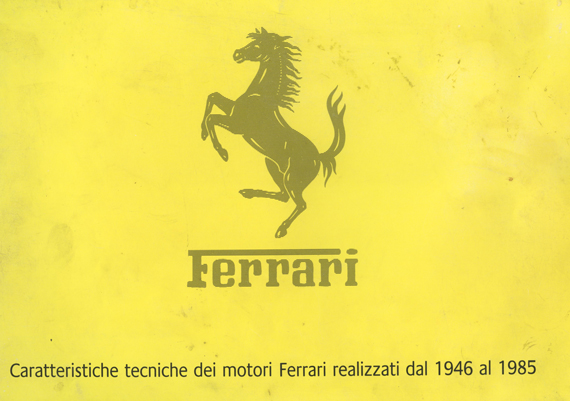
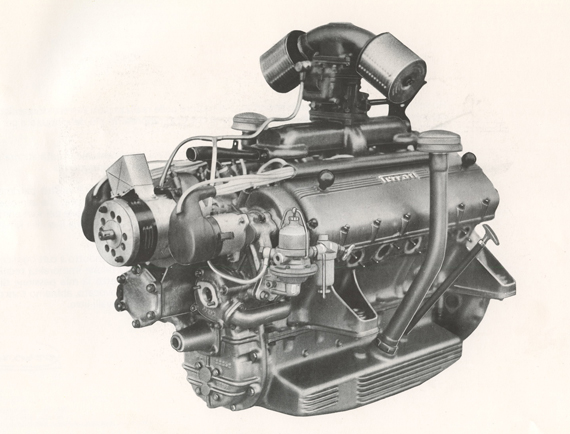
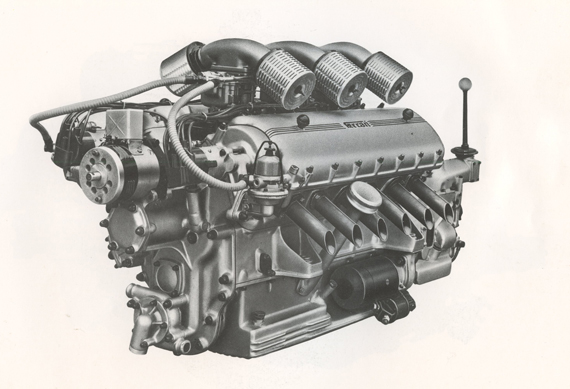
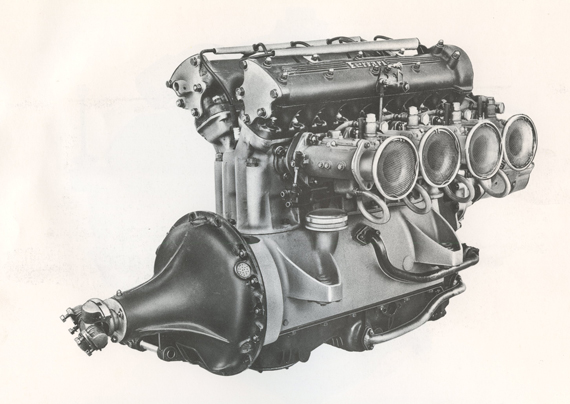
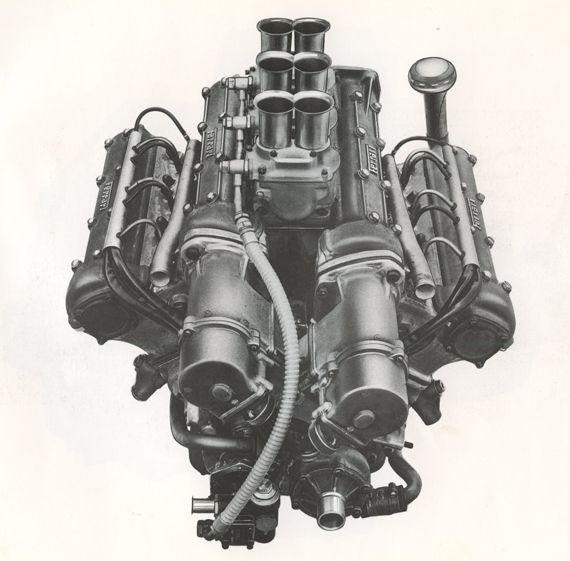
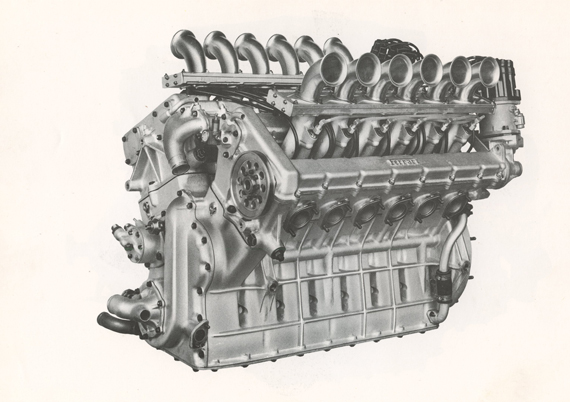
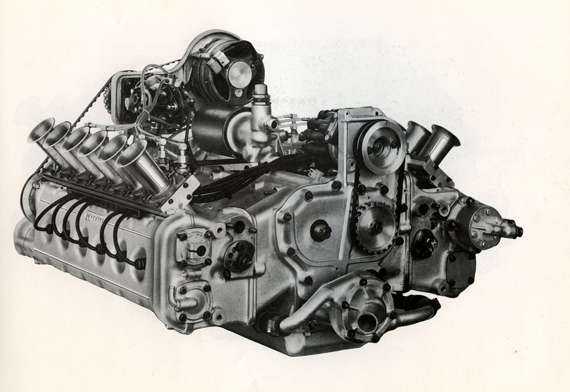
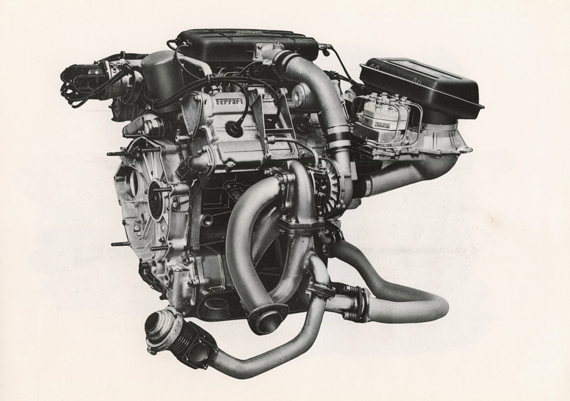
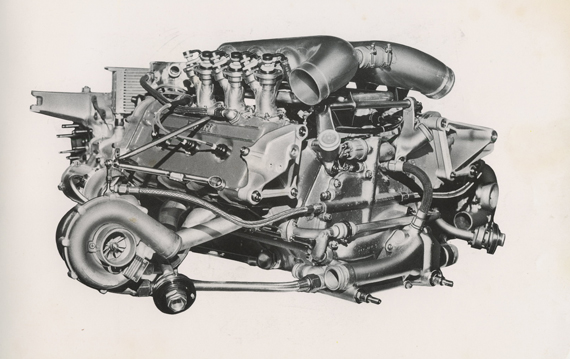
Hi Pete:
This piece reminded me of Chuck Jordan’s extraordinary collection of Ferrari literature that he showed me when I was interviewing him for an feature story I wrote about him for Forza years ago. Chuck, who I had befriended years earlier, had started working at GN’s Design Center, under Harley Earle, in the early 1950’s and h\eventually became Senior V.P. and Chief of Design. In the early 1960’s, he traveled to Italy to meet with Batista and Sergio Pininfarina at their offices, after which he first met Enzo Ferrari. In addition to being given a scale model car by Enzo during that visit to the factory, Chuck bought a 250 Lusso, the first of several Ferraris he owned over the years. He began collecting Ferrari literature, scale models and books about the marque. By the time I interviewed him, he owned every Scuderia Ferrari Yearbook printed between 1929-1938, every Ferrari race team yearbook and sales brochures ever printed by the company (including the 815), a signed first edition of “Piloti, Che Gente,” sent to him by Enzo, and countless other Ferrari memorabilia.
Looking through all of that original literature was an amazing experience. I don’t know what happened to his collection after he died; but if the yearbooks and sales brochure collection comes up for auction some day, it’ll being a fortune. I was fortunate enough to have met him in the mid-1990’s when he had begun selling duplicates of scale model Ferraris he owned. Needless to say. I acquired a number of them, my favorite of which is the very rare .Sergio Reggiani-designed 212 coupe known as “Uovo” (“the Egg”), which was raced in the 1951 Mille Miglia.
Le 330P4 a une pureté de dessin vraiment “Bugattiste”.
Merci de ce document: comme vous, je pleure Jano-Lancia–V8.
Hervé
David,
I worked for Chuck Jordan and once after he bought his Lusso I was called to his office as he was assigning me to to a new studio. After my new chief arrived and the business was finished he said “I want to show you something”. He pulled a small silver book out of his desk drawer, it was about the design of the Ferrari Lusso.
He handed me the book and he said, “Read this, you will learn a lot.” I started looking at it and he suddenly laughed and said “I am just loaning it to you for a few days, you have to bring it back”. He was taking no chances, even though I worked for him he wanted confirmation that it would be returned. When I brought it back to his office a few days later his secretary smiled and said that he would be happy that it was back.
Chuck loved Ferrari and Ferraris. I was told that before he passed away he said that his only regret was that he had not bought enough of them although my recollection is that he never owned more than three and never more than one at a time. Another time he showed me a beautifully crafted Ferrari V12 engine model that he had brought back from Europe. I once heard that he gave some brochures back to Ferrari from his collection to fill out the Ferrari archives, at their request.
He knew Sergio Pininfarina well. Although I have learned much more about his passion for Ferrari now after his passing he never made a thing about it while at work. He had one very pointed focus, inspiring his staff to design the best possible cars for General Motors.
Dick Ruzzin